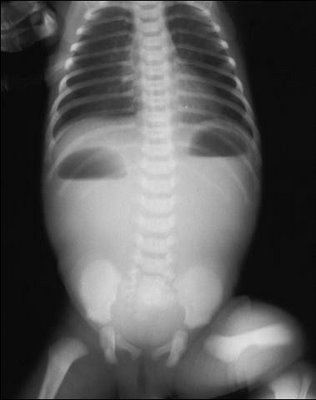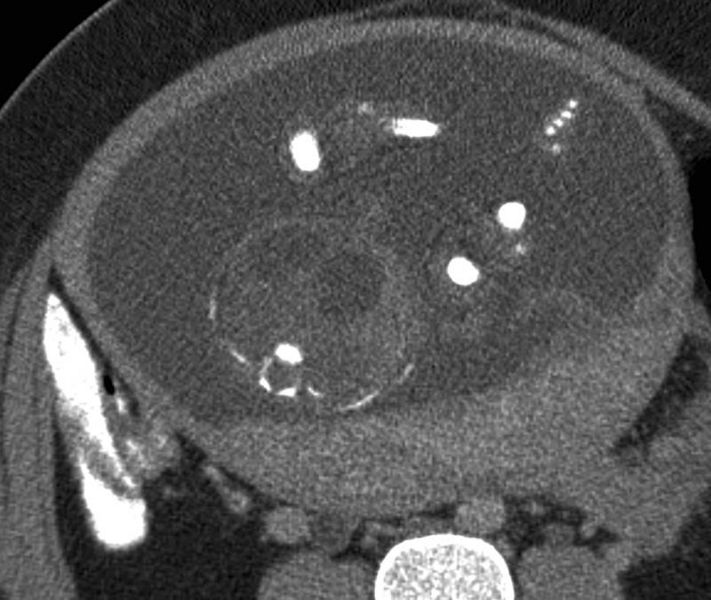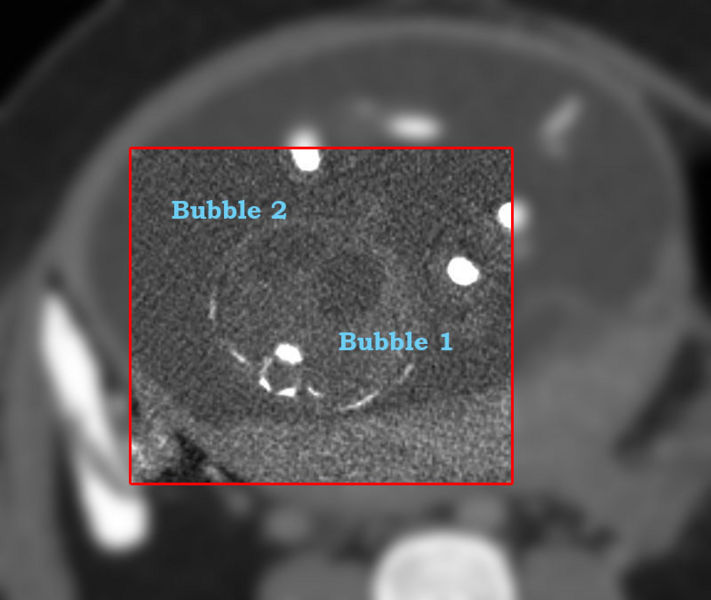Duodenal atresia: Difference between revisions
Hamid Qazi (talk | contribs) No edit summary |
Hamid Qazi (talk | contribs) No edit summary |
||
| Line 3: | Line 3: | ||
| colspan="1" style="text-align:center; background:DarkGray" | | | colspan="1" style="text-align:center; background:DarkGray" | | ||
Duodenal Atresia Microchapters | |||
''' | ''' | ||
|- bgcolor="LightGrey" | |- bgcolor="LightGrey" | ||
Revision as of 19:54, 19 December 2017
|
Duodenal Atresia Microchapters |
|
Diagnosis |
|---|
|
Treatment |
|
Case Studies |
|
Duodenal atresia On the Web |
|
American Roentgen Ray Society Images of Duodenal atresia |
| Duodenal atresia | |
| OMIM | 223400 |
|---|---|
| DiseasesDB | 31514 |
| MedlinePlus | 001131 |
|
WikiDoc Resources for Duodenal atresia |
|
Articles |
|---|
|
Most recent articles on Duodenal atresia Most cited articles on Duodenal atresia |
|
Media |
|
Powerpoint slides on Duodenal atresia |
|
Evidence Based Medicine |
|
Clinical Trials |
|
Ongoing Trials on Duodenal atresia at Clinical Trials.gov Trial results on Duodenal atresia Clinical Trials on Duodenal atresia at Google
|
|
Guidelines / Policies / Govt |
|
US National Guidelines Clearinghouse on Duodenal atresia NICE Guidance on Duodenal atresia
|
|
Books |
|
News |
|
Commentary |
|
Definitions |
|
Patient Resources / Community |
|
Patient resources on Duodenal atresia Discussion groups on Duodenal atresia Patient Handouts on Duodenal atresia Directions to Hospitals Treating Duodenal atresia Risk calculators and risk factors for Duodenal atresia
|
|
Healthcare Provider Resources |
|
Causes & Risk Factors for Duodenal atresia |
|
Continuing Medical Education (CME) |
|
International |
|
|
|
Business |
|
Experimental / Informatics |
Editor-In-Chief: C. Michael Gibson, M.S., M.D. [1]
Overview
Duodenal atresia is the congenital absence or complete closure of a portion of the lumen of the duodenum.
Historical Perspective
Classification
Pathophysiology
Causes
Differentiating Duodenal atresia from Other Diseases
Epidemiology and Demographics
Approximately 20-40% of all infants with duodenal atresia have Down syndrome. It is also associated with polyhydramnios which is increased amniotic fluid in the uterus.
Risk Factors
Screening
Natural History, Complications, and Prognosis
Natural History
Complications
Prognosis
Diagnosis
Diagnostic Criteria
The diagnosis of duodenal atresia is usually confirmed by radiography. An X-ray of the abdomen shows two large air filled spaces, the so-called "double bubble" sign. The air is trapped in the stomach and duodenum. Since the closure of the duodenum is complete in duodenal atresia, no air is seen distal to the duodenum.
History and Symptoms
Physical Examination
Laboratory Findings
Imaging Findings
Chest X Ray

CT
Mom had CT scan to rule out appendicitis. Duodenal atresia incidentally noted
- For the neonate with the classic appearance of a double bubble, additional radiologic investigation is unnecessary, and the surgeon is alerted to plan for surgery, since all congenital causes of duodenal obstruction require surgery.
- The double bubble sign is a finding observed on radiographs of newborns and infants.
- The finding depicts two air-filled structures in the upper abdomen, with little or no air distally.
- The proximal left-sided bubble is the air- and fluid-filled stomach. The proximal duodenum represents the second bubble to the right of the midline.
- It is reproducible with a variety of other imaging modalities, including upper gastrointestinal studies and sonography.

